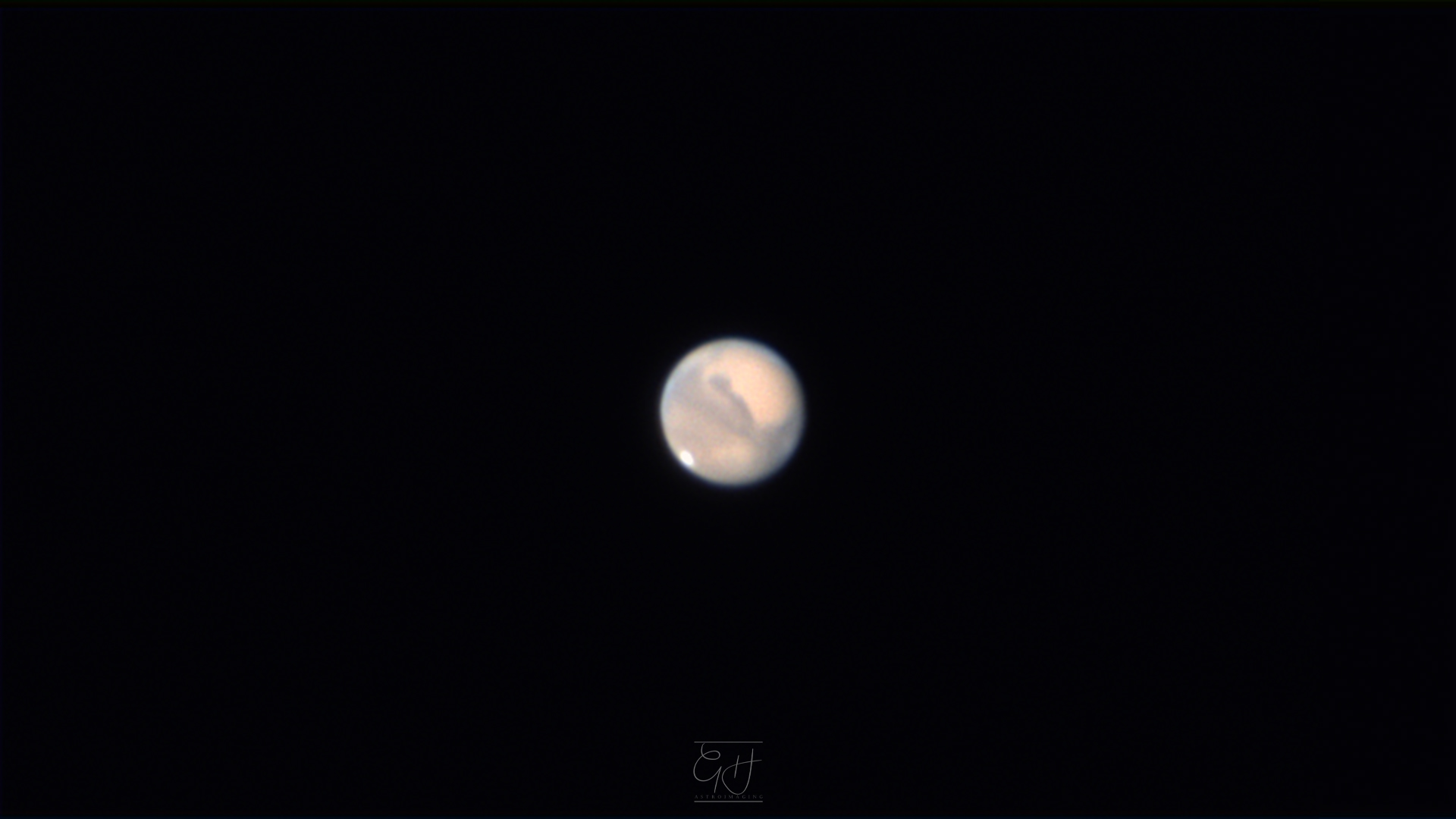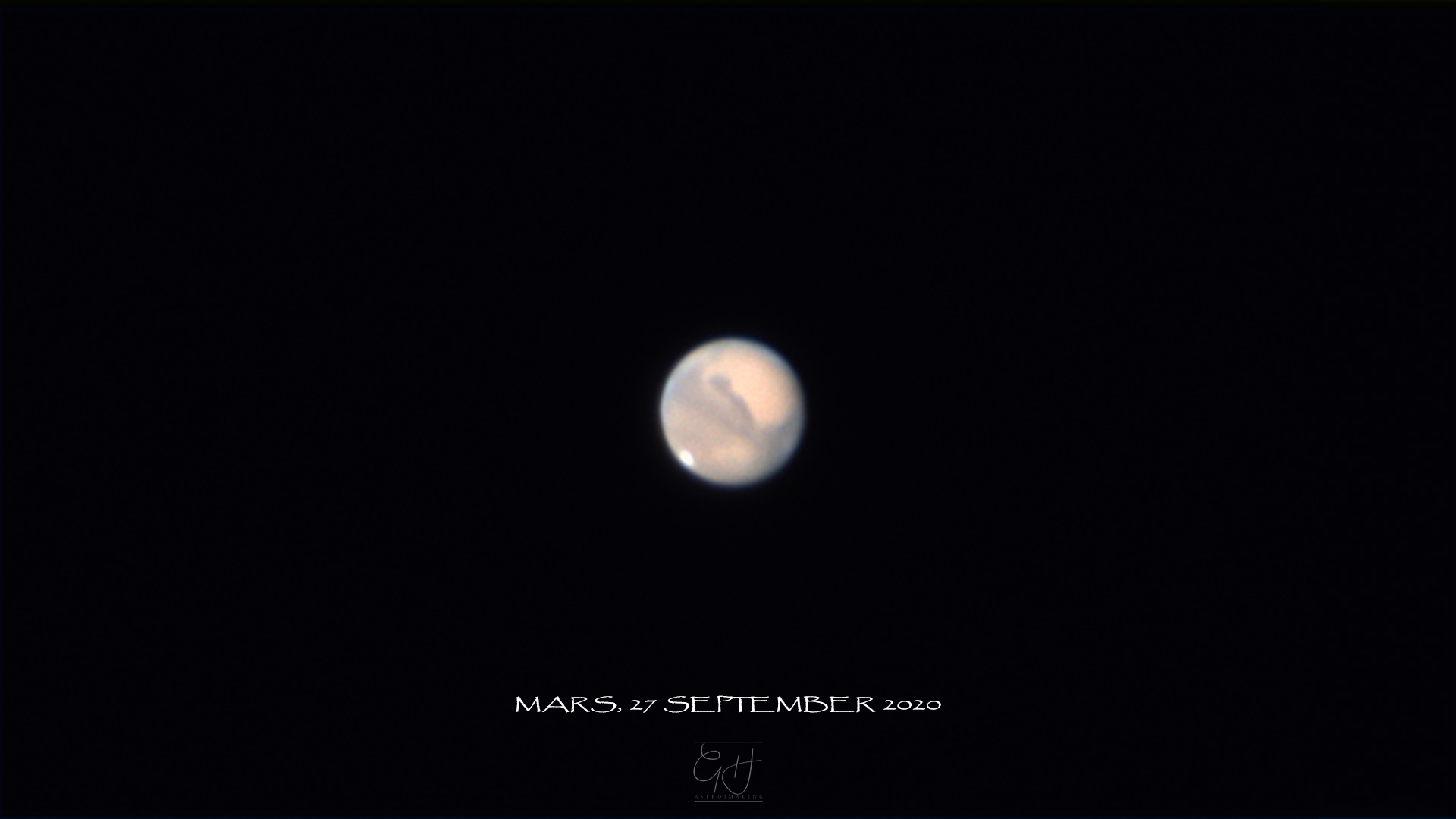Mars, September 27 2020


Mars. The fourth planet in our Solar System, named for the Roman God of War. It is the second smallest planet in our Solar System, larger than only Mercury, and is home to Olympus Mons, the largest volcano and highest known mountain anywhere in our Solar System.
Mars has two moons, Phobos and Deimos (not visible in this image) which are both small and irregularly shaped. The red colour of the planet, often visible even to the naked eye, is the result of high quantities of iron oxide (rust) on its surface.
The force of gravity on the surface of Mars is a little over one-third as strong as on Earth, which is a consequence of it having just over one-tenth of the total mass of Earth.
Just visible at the lower left part of the planet's surface is a bright spot - this is one of the polar ice caps. The bulk of the ice cap consists of water ice, but in winter the size of the ice caps grow as a result of the accumulation of frozen carbon dioxide (dry ice) on top of the water ice that remains permanently in position.
This image was my first use of the new planetery camera for its intended purpose - previous images from that camera were the Ring Nebula, the Dumbbell Nebula and the Messier 92 Cluster.










Sign in to enable commenting